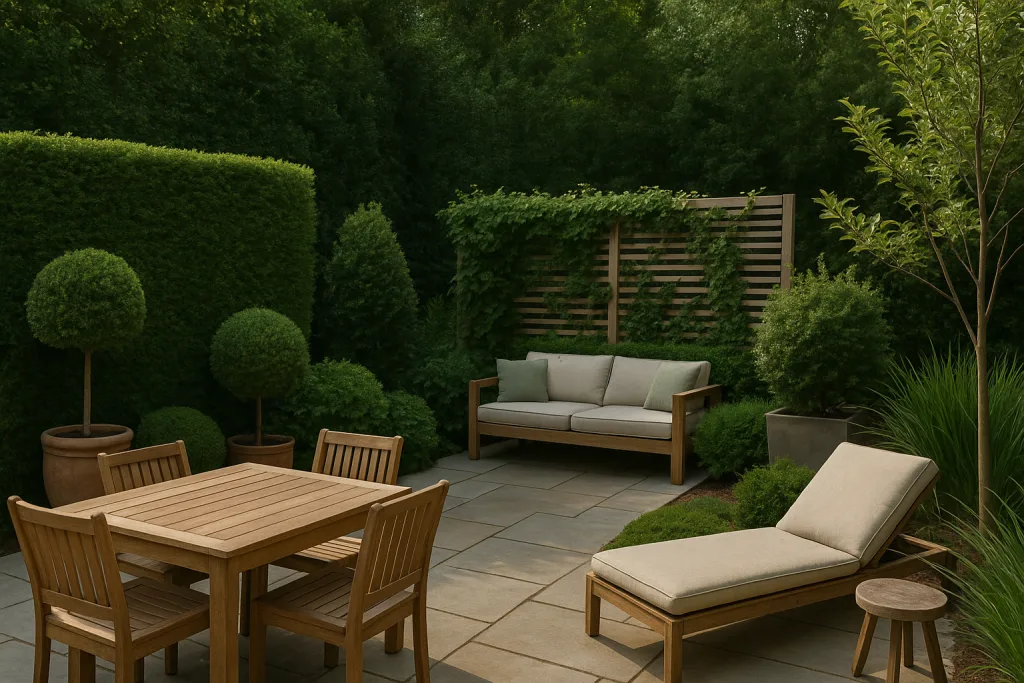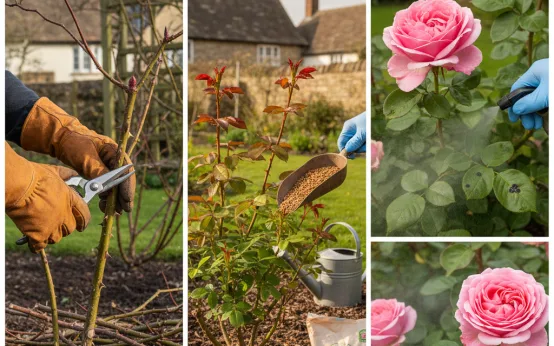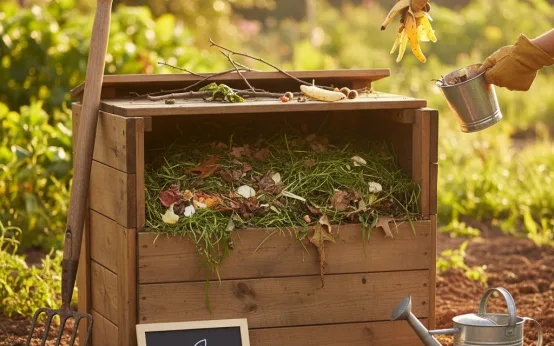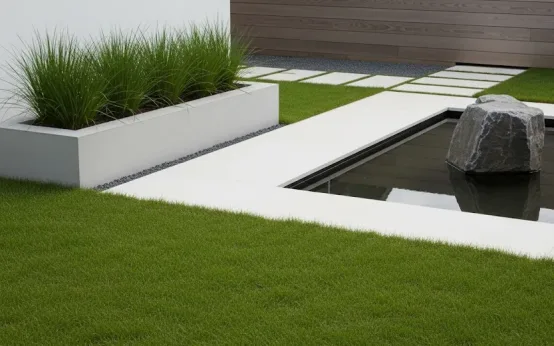
Modern gardens are no longer seen only as places for flowerbeds and lawns. Increasingly, they are treated as extensions of the home, with outdoor “rooms” providing different areas for dining, relaxing, entertaining, or even working. Dividing a garden into zones makes it more functional and enjoyable, giving each part a clear identity while still feeling connected to the whole. In the UK, where outdoor space is often compact, clever divisions are particularly useful, and plants are one of the most effective tools for achieving them.
Why Divide Outdoor Spaces with Plants
Creating divisions outdoors is about more than adding structure; it is about guiding movement and shaping atmosphere. Just as interior walls separate a kitchen from a living room, plants can define where one garden zone begins and another ends. Unlike fences or solid barriers, planting feels softer, more natural, and more adaptable.
In smaller British gardens, where traditional walls or screens might make a space feel closed in, plants create subtle separations without reducing openness. A row of ornamental grasses can mark a dining area, while a group of tall shrubs may provide privacy around a seating corner. Plants bring seasonal change as well, so the divisions evolve through the year, offering fresh interest. They also contribute ecological benefits, supporting pollinators and birds while improving the garden’s overall appearance.
Plants that Work Well for Divisions
Different plants can be used to create boundaries, each offering distinct visual and practical qualities. Some provide structure all year, while others add seasonal flair. Good choices for UK gardens include:
- Hedges (yew, laurel, privet): Classic, evergreen, and reliable for strong boundaries.
- Bamboo: Fast-growing and stylish, perfect for contemporary spaces, though root barriers are essential.
- Tall ornamental grasses (miscanthus, pampas): Add movement and texture, creating soft partitions.
- Climbing plants on trellises (clematis, honeysuckle, roses): Provide vertical green walls with seasonal flowers.
- Small trees (Japanese maple, silver birch): Elegant focal points that create natural canopies dividing zones.
Using a mix of these options helps avoid monotony and ensures divisions suit both practical needs and aesthetic goals. Evergreen shrubs provide structure in winter, while flowering climbers add bursts of colour in spring and summer.
Designing Effective Outdoor Rooms
When planning outdoor divisions, scale and proportion matter. In compact UK gardens, overly tall hedges or dense plantings may overwhelm the space. Instead, using staggered planting at different heights creates definition without blocking light or airflow. For example, a low hedge can edge a pathway, while taller grasses sway behind it, marking the transition to a new zone.
Pathways are another useful tool. Lining them with plants naturally directs movement, leading visitors from one “room” to another. A seating nook surrounded by bamboo feels private yet still part of the wider garden, while a dining space framed by lavender borders feels structured and inviting. Trellises with climbers can divide areas elegantly, allowing glimpses through foliage that keep the garden from feeling cut off.
It is also important to think about atmosphere. A play area for children might benefit from softer, durable plants that can withstand activity, while a reading corner may be better defined by calming foliage and scented flowers. Lighting adds another dimension, highlighting divisions at night and extending usability after dark. Spotlights on small trees or uplighting hedges give structure even when natural light fades.
A Flexible and Living Design
The great advantage of using plants for outdoor divisions is flexibility. Unlike permanent walls, planting can evolve. Shrubs can be pruned into neat shapes or left to grow more informally, grasses can be replaced with flowering perennials, and climbers can be swapped to refresh colour palettes. Over time, the garden changes, reflecting both the seasons and your preferences.
Plant-based divisions also connect people more deeply with nature. Instead of being surrounded by hard surfaces, you experience texture, scent, and movement. Birds nest in hedges, bees visit flowering climbers, and grasses sway in the breeze. The result is not just a divided garden but a living, breathing space full of life and interest.
Outdoor room divisions make gardens more practical, but when created with plants, they also make them more beautiful. Whether separating a dining area from a vegetable patch or carving out a quiet retreat within a busy household, plants provide structure without rigidity. They soften boundaries, add variety, and ensure that every part of the garden has a purpose. With thoughtful planning and the right selection, your outdoor rooms can become as functional and inviting as the rooms inside your home.

 Rose Garden Care: Pruning, Fertilizing, and Disease Prevention
Rose Garden Care: Pruning, Fertilizing, and Disease Prevention  How to Start Composting: A Beginner’s Guide
How to Start Composting: A Beginner’s Guide  Modern Minimalist Garden Design
Modern Minimalist Garden Design